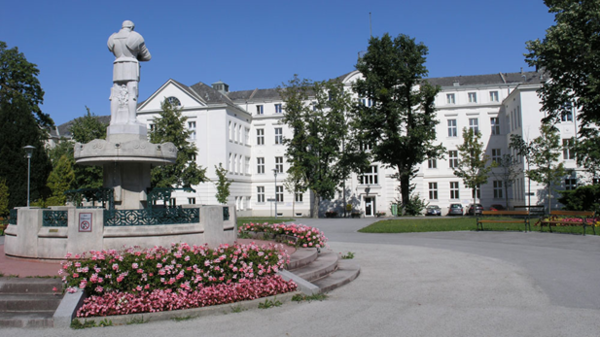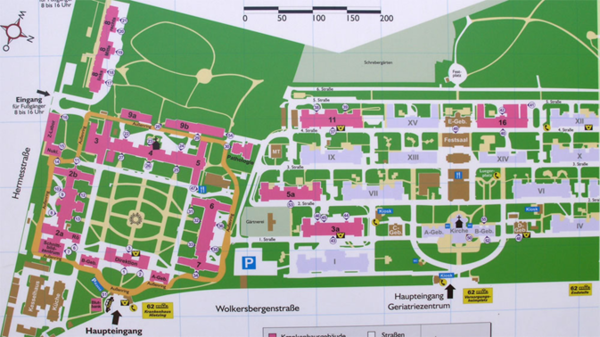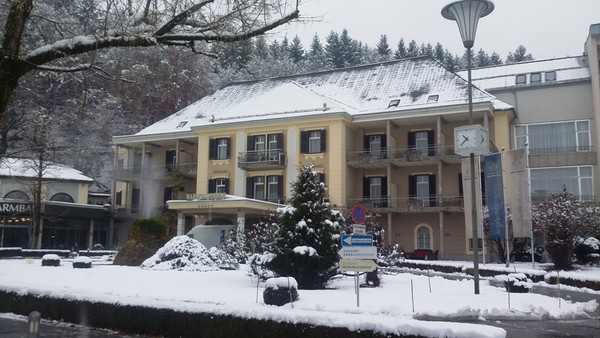
[아츠앤컬쳐] 지난 기사에서 다룬 병원과 같은 의료 시설에 이어 오스트리아에는 종합적인 사회 보장 및 복지 제도가 있다. 이것은 두 가지 형태로 작동하는데 첫째, 모든 유급 취업자 및 질병, 사고, 실업, 육아휴직 및 연금의 경우 그 부양 가족에게 상당 부분을 보장하는 보험과 둘째, 연방, 지방 및 시 당국이 보험 시스템의 적용을 받지 못하지만 도움이 필요한 시민에게 제공하는 공공 복지 혜택이다.
사회보험은 오스트리아 사회 보장 시스템의 핵심이다. 사회보장은 질병, 사고, 노동력 부족, 노년 문제와 같은 생활 속 각종 위험과 그 결과로부터의 보호다. 사회보험제도는 보호대상자의 수와 금액의 규모에서 사회정책 분야의 가장 중요한 요소이다.
오스트리아 사회 보험 시스템은 다음과 같은 여러 요소로 구성된다. 출산 휴가를 포함하는 건강보험 급여에는 요양비, 입원비, 건강검진비, 육아수당, 질병급여 등이 포함되고, 일정 조건 하에서 가족구성원도 보험 혜택을 받는다. 이 외에 건강스파는 예방 조치(또는 경증 질병을 위해)로서, 특정 요건이 갖춰지면 대부분의 보험사는 건강스파 숙박 비용을 지원한다. 많은 사람들이 건강 스파에서 만성 스트레스, 신체적 질병을 관리 받는다.
또한, 임종을 위해 322개의 호스피스와 완화 의료시설이 있다. 서비스의 대부분은 입원 환자나 다른 시설로 이송된 환자 또는 가정에서 제공받을 수 있다. 전국에 약 60여 개의 이동식 완화 팀이 있다. 이 의료 전문가들은 노인과 말기 환자의 편안한 말년을 돕는다. 가장 오래된 병원 중 하나인 Lainzer Hospital에는 정신 치료, 호스피스, 첨단기술 지원 등 다양한 부서를 위한 여러 전시관이 있다.

산업재해 보험은 산업재해, 질병 및 그 결과로 취업 불능 및 장애 시 보장하며, 연금 보험은 일례로 퇴직금을 제공한다. 또한, 실업보험은 실업 수당 및 긴급 지원금을 제공한다. 모든 봉급생활자는 자동으로 실업 보험에 가입하고 실직할 경우, 공공 고용 서비스에서 새 일자리를 찾을 때까지 사회 보험 비용을 지불한다.
오스트리아 사회보험은 의무 가입 제도다. 기금은 고용주가 지불하며, 영업허가가 있는 자영업자, 신규 자영업자 및 계약자는 사회보장기금을 자진 납부한다. 고용된 근로자 및 프리랜서의 법정 기금은 고용주가 자동으로 공제하여 세무서에 납부한다. 고용주는 직원을 사회보험에 등록할 책임이 있다.
복지제도는 유럽의 성격을 띤다. 복지국가를 구성하는 광범위하고 상호 연결된 사회 정책은 사회적 불행, 혼란, 저항, 정치적 갈등과 전쟁, 한편으로는 화해, 협력, 안정, 질서, 조화, 평화에 대한 유럽의 역사적 경험을 반영하기 때문이다. 복지 국가는 응집력 있는 경제, 사회, 정치 및 문화 질서를 구축하고 유지하는 방법에 대한 독특한 대답을 구현하게 되었다. 이어 다음 기사에서는 복지 지원 구조를 다룰 예정이다.

Social welfare system in Austria Part 2 Social Insurance
Beside the health care facilities, like mentioned Hospitals in last Article, Austria provides a comprehensive system of social security and welfare schemes. The network operates at two levels. First, there is the principle of insurance, which provides cover for all gainfully employed persons, and to a large extent for their dependents in cases of sickness, accident, unemployment, parental leave, and pensions, and, secondly, there are public welfare benefits made available by the federal, provincial and municipal authorities to citizens in need, who are not covered by the insurance system.
The social insurance system is the most important part of the Austrian social security system. Social security means protection against various risks in life, such as illness, accidents, the inability to work and the problems of old age, as well as the related consequences. The social insurance system is the most significant element in the field of social policy with regard to both the number of persons protected as well as the amount of money involved.
The Austrian social insurance system consists of several different pillars: Health insurance (Krankenversicherung), which also encompasses maternity leave. Health insurance benefits include assuming the costs of medical treatment, hospitalisation, medical check-ups, childcare allowances, sickness benefits etc. Under certain conditions, family members are insured free of charge.
Further: As a preventive measure (or in order to manage mild ailments), most insurers will help you foot the bill for a stay at a health spa (Kur), as long as certain medical requirements are met. Many people make use of a Kur to manage chronic stress, physical ailments, or a combination of both.
For the end of Life, there are 322 hospices and palliative care facilities in Austria. Many of these services are offered to patients at hospitals or to patients transferred to another facility. These can also be provided at home: There are roughly five dozen mobile palliative teams established across the country. These medical professionals help assure elderly and terminally ill patients will remain comfortable in their final days. Lainzer Hospital, one of the oldest Hospital, with several pavilions for different departments including mental treatment and hospices, as well as high tech support.
Work accident insurance(Unfallversicherung), providing coverage in case of occupational accidents and diseases and their consequences e.g. invalidity and disablement. Pension insurance (Pensionsversicherung), e.g. retirement benefits. Unemployment insurance (Arbeitslosenversicherung) encompassing benefits in case of unemployment such as unemployment benefits and emergency assistance. Every salaried employee automatically pays into unemployment insurance. If you lose your job, Public Employment Service Austria (AMS) pays for your social insurance until you find new employment.
The Austrian social insurance system represents a mandatory insurance scheme. Contributions are paid by the employers on behalf of all employees and if applicable on behalf of their relatives as well. Self-employed people with a trade license, new self-employed persons and contractors must pay their social security contributions themselves. The statutory contributions of employed persons (workers and freelancers) are automatically deducted by the employers and paid to the tax office. Employers are also responsible for registering their employees with the social insurance system.
The welfare state is European in character, because the wideranging, interconnected social policies that make up the welfare state reflect the historical European experience of social misery, turmoil, protest, political conflict and war, on the one hand, and reconciliation, cooperation, stability, order, harmony and peace, on the other. The welfare state came to embody a unique answer to the question of how to build and maintain a relatively cohesive economic, social, political and cultural order. More on interesting welfare support structure can be found in the next article.

글 | 볼프강 슬라빈스키 Wolfgang Slawinski
서울명예시민
한·오스트리아협회 부회장

